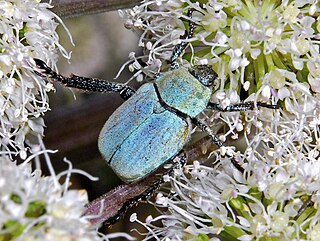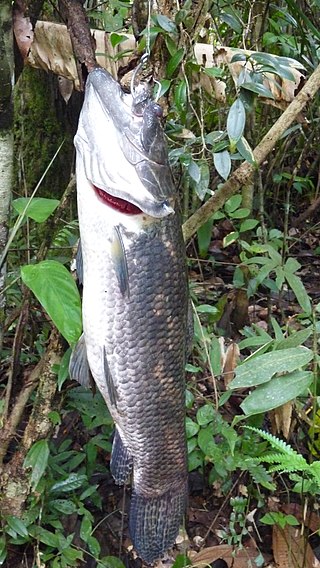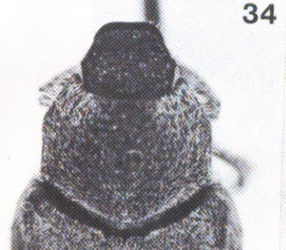
The Ford Festiva is a subcompact car that was designed and manufactured by Mazda for Ford between 1986 and 2002. Festiva was sold in Japan, the Americas, and Australia. The name "Festiva" is derived from the Spanish word for "festive". It was not related to the similarly sized and named Ford Fiesta, and was not replaced by the Ford Ka, which is smaller.

The Mazda Demio is a subcompact/supermini/B-segment small car manufactured by Mazda since 1996. While sold across four generations in the domestic Japanese market, the Demio nameplate was rarely used outside of Japan, where it was usually called the Mazda2. The Demio nameplate was retired in 2019 as Mazda changed over to "Mazda2" for their home market as well.

The Erythrinidae are a family of fishes found in rivers and other freshwater habitats from Costa Rica south as far as Argentina. They are common and are caught with hooks by fishermen, partially because of their voracious behaviour. They are sometimes called trahiras or tarariras.
Wolf fish, wolf-fish, or wolffish may refer to:

The festive amazon, also known as the festive parrot, is a species of parrot in the family Psittacidae. It is found in Brazil, Colombia, Ecuador, Bolivia, Guyana, Peru, and Venezuela. It is associated with forest and woodland growing near major rivers. Locally, it is also found in coastal mangroves. There are two subspecies; A. f. festiva and A. f. bodini.

Hoplia argentea is a species of scarabaeid beetle belonging to the subfamily Melolonthinae.

A mesocosm is any outdoor experimental system that examines the natural environment under controlled conditions. In this way mesocosm studies provide a link between field surveys and highly controlled laboratory experiments.

Hoplias aimara, also known as anjumara, traíra, trahira, manjuma, anjoemara and wolf fish, is a species of freshwater fish found in the rivers of South America. In Amazonia, the native populations are concerned by high levels of mercury contamination which have been linked to the consumption of contaminated fish. H. aimara is a good bioindicator of such contamination.

Hoplia coerulea is a species of scarabaeid beetle belonging to the subfamily Rutelinae. This beetle can be found in Southwest Europe, including France, Spain and Switzerland. Males are bright blue, females are brownish.

Hoplias malabaricus, also known as the wolf fish, tiger fish, guabine or trahira, is a predatory Central and South American freshwater ray-finned fish of the characiform family Erythrinidae.

Hoplias curupira, also known as the black wolf-fish, has a wide distribution in the Amazon basin but was described as recently as 2009.
Hoplias brasiliensis is a species of trahiras. It is a benthopelagic, tropical freshwater fish which is known from coastal rivers in northeastern Brazil, including the Paraguaçu River in Bahia, the Pardo River, the Jequitinhonha River in Minas Gerais and Espírito Santo, and the Contas River. Male H. brasiliensis can reach a maximum length of 20.3 centimetres.
Hoplias lacerdae is a predatory freshwater characin fish from South America. They are commonly known are trairão in Brazilian Portuguese.
Hoplias microcephalus is a species of trahiras. It is a tropical, benthopelagic freshwater fish which is known to inhabit the São Francisco River in Brazil. Males can reach a maximum length of 35.6 centimetres.
Hoplias teres is a species of trahiras. It is a tropical, benthopelagic freshwater fish which is known to inhabit Lake Maracaibo in Venezuela. Males can reach a maximum length of 15.3 centimetres.

Hoplia is a genus of monkey beetles in the family Scarabaeidae. There are at least 300 described species in Hoplia. These species are found in Asia, Europe, South Africa, Madagascar, and the Americas.
Hoplia trifasciata, the three lined hoplia, is a species of scarab beetle in the family Scarabaeidae. It is found in the eastern United States and Canada.

Hoplia callipyge is a species of scarab beetle in the family Scarabaeidae. It has been recorded in the western United States, in British Columbia in Canada, and in Baja California in Mexico. Adults are about 5.75–10.5 millimetres (0.226–0.413 in) long, 3.4–5 millimetres (0.13–0.20 in) wide, oval, and brown. They are very similar visually to other Hoplia species, especially Hoplia hirta and Hoplia laticollis.
Hoplia modesta is a species of scarab beetle in the family Scarabaeidae. It is found in North America.











